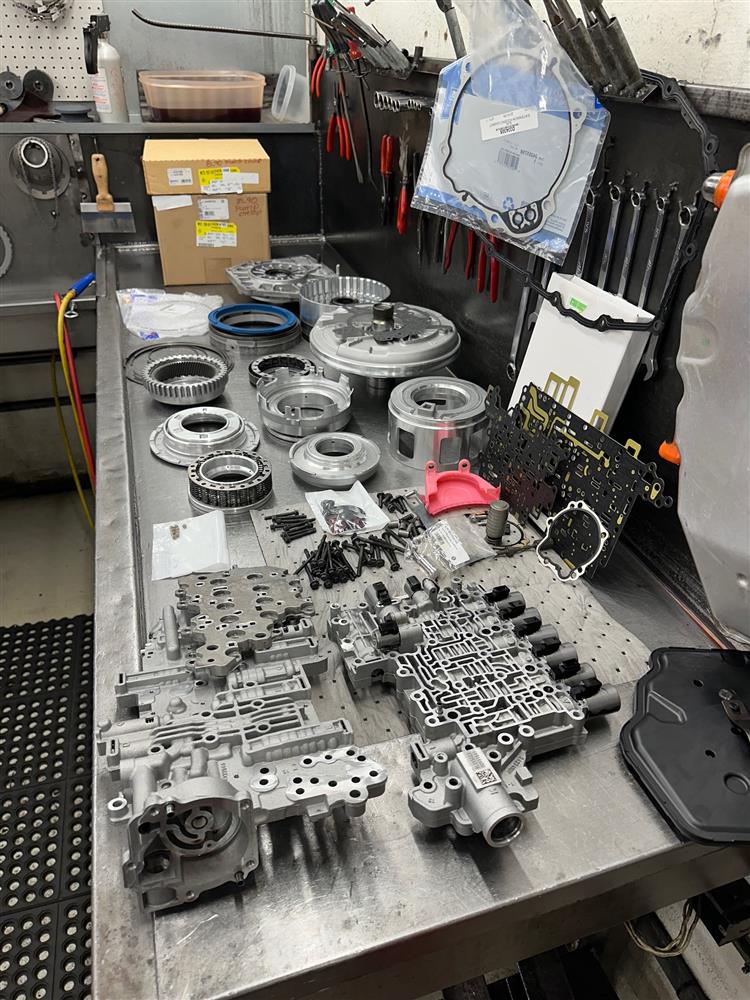
Rebuilding an 8L90 transmission is a complex process that demands precision, expertise, and attention to detail. This 8-speed automatic transmission, designed for performance and efficiency, powers many vehicles. However, even experienced mechanics can make costly missteps during a rebuild. These mistakes can lead to performance issues, premature failure, or additional repairs down the road.
At Circle D Transmission, we've helped countless customers ensure their vehicles run smoothly by performing reliable transmission rebuilds using 8L90 transmission upgrades. To help you avoid some of the most common pitfalls, we’ve compiled this guide to highlight key mistakes and provide practical tips for a successful, stress-free rebuild.
Neglecting Proper Diagnosis Before the Rebuild
One of the biggest mistakes that occur before starting any rebuild is skipping a thorough diagnostic process. It’s easy to assume that rebuilding the transmission is the best solution when your vehicle exhibits performance problems. However, issues such as slipping gears, hard shifting, or delayed responses may stem from external factors like a failing torque converter or an electronic control issue.
How to Avoid This Mistake
- Conduct a Full Diagnostic Test: Use advanced scanning tools to identify any error codes related to the transmission. Verify whether the issue stems from internal components or something external.
- Inspect Adjacent Systems: Take the time to check related systems like the cooling system, as overheating can cause significant damage to transmissions.
- Consult Industry Experts: If you’re uncertain of your diagnosis, we recommend seeking help from an experienced transmission specialist to confirm whether a rebuild is truly necessary.
By addressing the root cause of transmission problems first, you can save time and effort while avoiding unnecessary repairs.
Improper Handling of Internal Components
The internal system of an 8L90 transmission is intricate, with numerous components requiring careful handling. These components—such as valve bodies, clutches, and steel plates—must be removed and reassembled with precision. A common pitfall is failing to organize or inspect these parts during the teardown process.
How to Avoid This Mistake
- Label and Organize Parts: As you disassemble the transmission, label each component and group them systematically. This will make reassembly faster and more accurate.
- Thoroughly Clean and Inspect Components: Dirt or leftover debris can quickly compromise the integrity of your work. Make sure each part is cleaned and carefully inspected for wear or damage.
- Replace Worn Parts: It’s critical not to reuse components that show signs of wear, as they can compromise the rebuilt transmission’s performance over time.
Attention to detail here directly impacts whether your rebuild performs like new or fails prematurely.
Failing to Use Manufacturer-Approved Parts and Fluids
Another common oversight during an 8L90 rebuild is opting for generic or subpar parts and fluids to save costs. However, these choices can compromise the longevity and functionality of the transmission. The 8L90 is designed to operate with specific components and fluids that align with its high-performance capabilities.
How to Avoid This Mistake
- Source OEM or Quality Aftermarket Parts: Always use parts approved by the original equipment manufacturer (OEM) or high-quality aftermarket options from reputable suppliers.
- Use the Proper Transmission Fluid: For an 8L90 transmission, the approved fluid is typically Dexron HP automatic transmission fluid. Improper fluids can lead to degraded performance and component damage.
- Invest in Quality: It may be tempting to cut corners, but using inferior parts often results in higher costs down the line. Focusing on quality ensures long-term reliability.
We’ve seen firsthand how poor-quality components can lead to expensive repairs, so it’s essential to prioritize durability when sourcing your materials.
Boosting Confidence and Longevity in Rebuilds
Whether you’re tackling the rebuild yourself or relying on a professional, avoiding these common mistakes ensures that your 8L90 transmission performs at its best. From thorough diagnostics to precision in handling components and selecting quality parts, these steps protect your investment and deliver smoother performance.
At Circle D Transmission, we are proud to support vehicle owners with expert services and trusted advice. If you’re planning a rebuild and would like professional guidance, feel free to reach out.
Frequently Asked Questions About 8L90 Transmission Rebuilds
What are the symptoms indicating an 8L90 transmission needs rebuilding?
Common symptoms can include slipping gears, delayed engagement, harsh shifting, strange noises (whining or humming), or fluid leaks. A professional inspection can confirm whether a full rebuild is necessary or if smaller repairs will suffice.
How do I know if I should rebuild or replace my 8L90 transmission?
Rebuilding is often a cost-effective solution if the transmission case is still in good condition and the internal components can be repaired or replaced. Replacement is usually recommended if the damage is severe or the transmission has reached the end of its lifespan. Consulting a transmission specialist will help you make the right decision.
At Circle D Transmission, we specialize in helping customers with expert transmission services, including rebuilds and repairs. Our certified technicians are here to guide you through every step. If you have questions or need assistance, contact us today.



